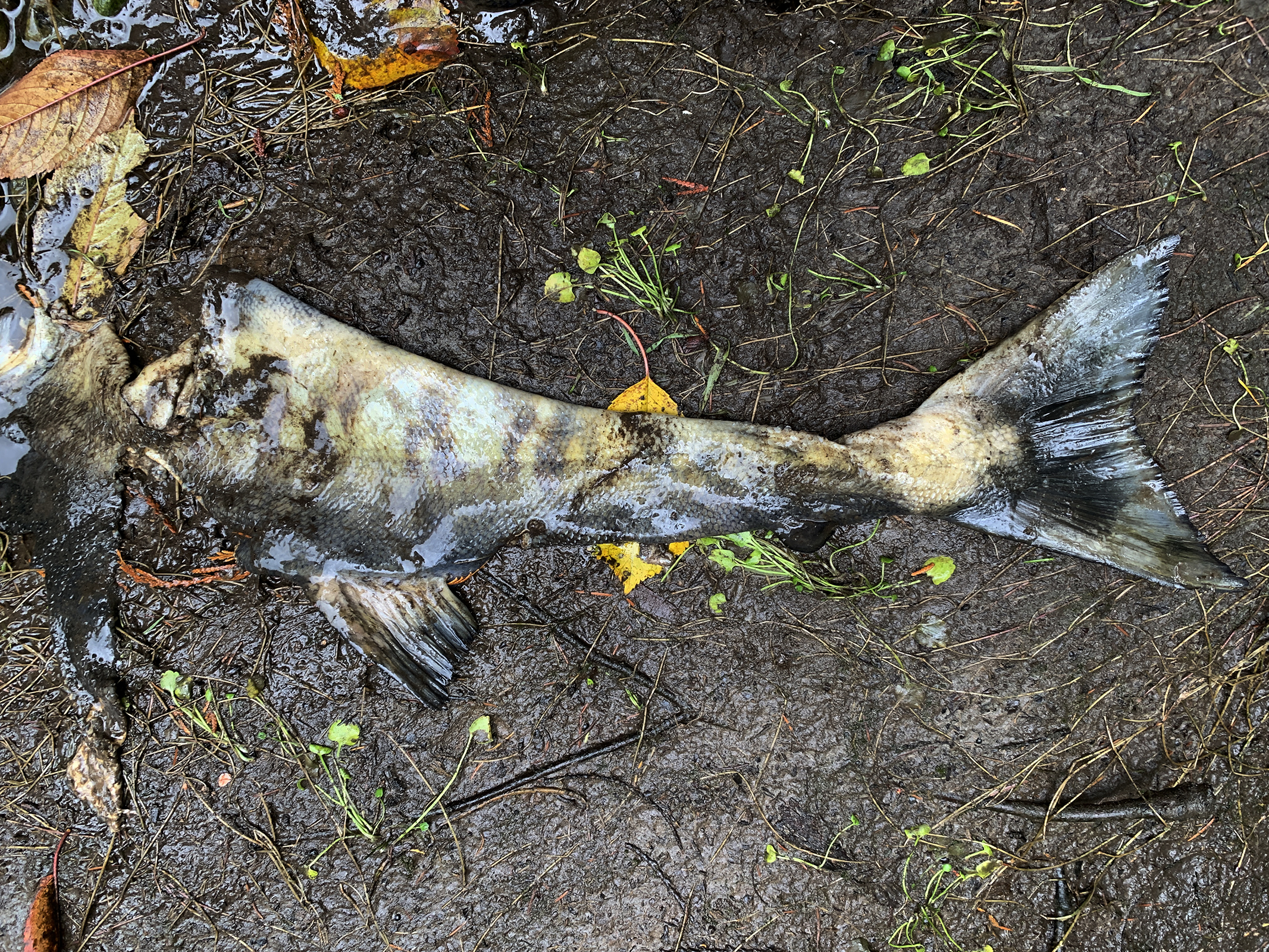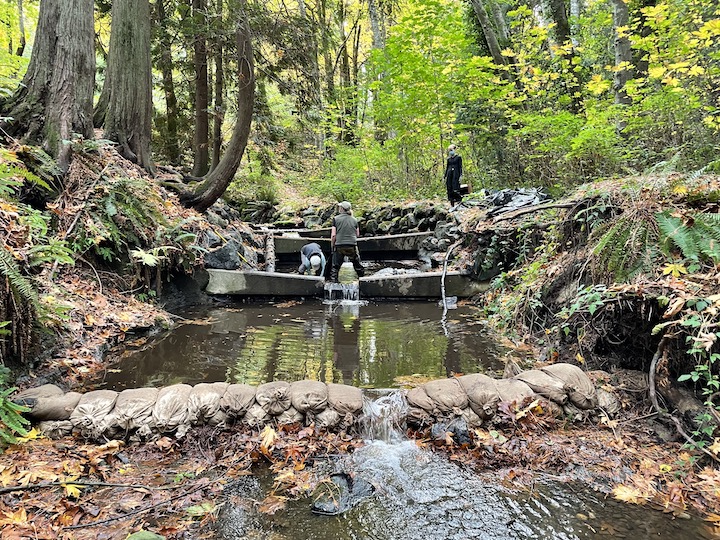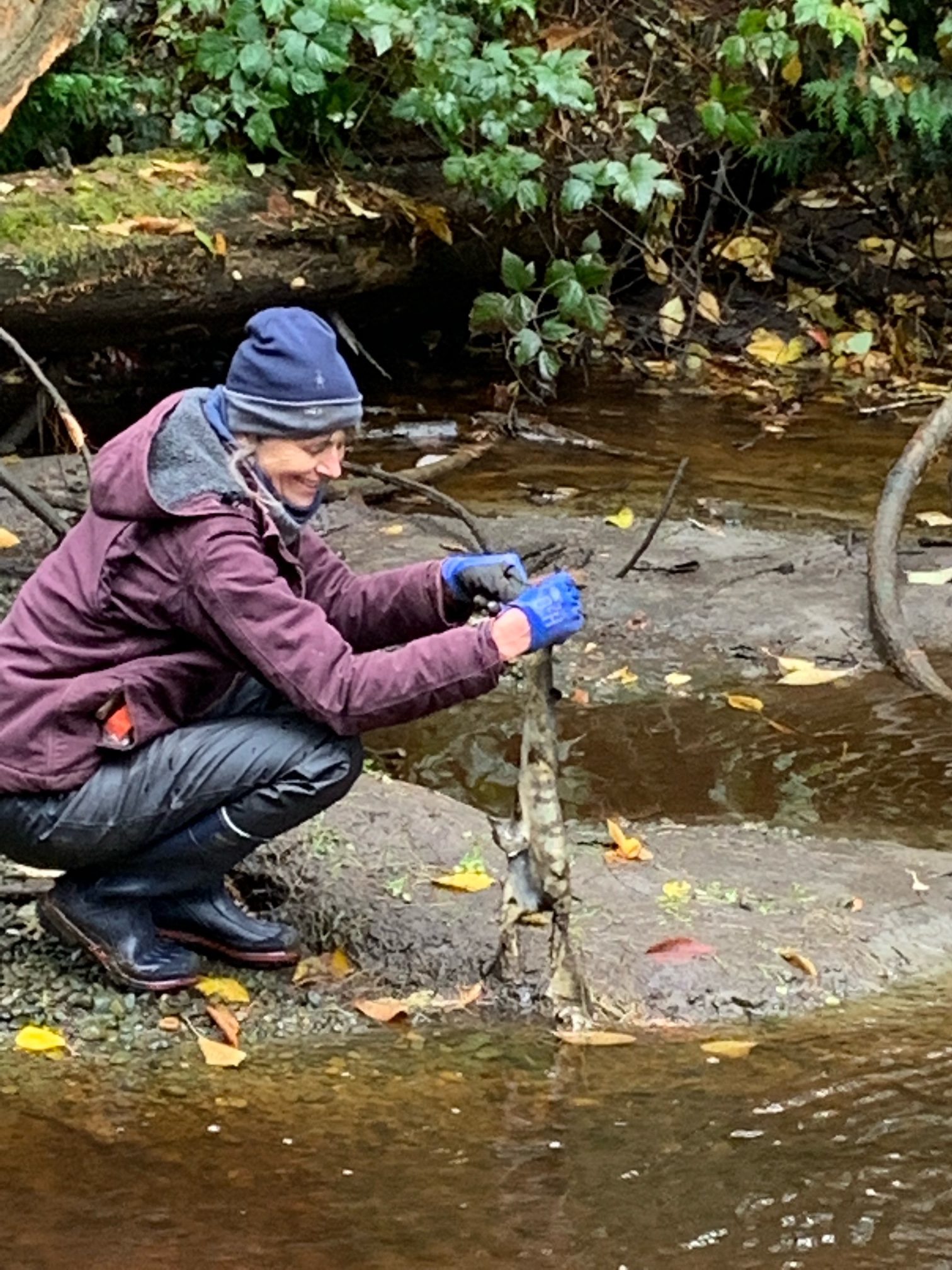Our enormous thanks go out to our incredible slate of volunteers that helped with this year’s salmon monitoring! Many, many thanks to our volunteers who contributed over 140 hours of their time to this program: Janelle Perreira, Steve and Jane Hannuksela, Ellen Gunderson, Deborah Milton, Fran Fuller, Melissa Sherrow, Martha Earnest, Sirri Hanson, Kenzie Williamson, Marcia and Hugh Montgomery, Jacki McClure, and Chris Moore. This work could not be done without you!
We monitored five transects on four Island streams this year: Schel-chelb Creek that feeds into the Lynwood Center area, 2 reaches on Springbrook Creek which flows into Fletcher Bay, Murden Creek which flows into Murden Cove, and Manzanita Creek which flows into Manzanita Bay (See our Salmon Monitoring Map).
Unfortunately, this was another low year for salmon returns We recorded a total of 10 adult salmon to Manzanita (7 recorded) and lower Springbrook Creek (2, carcasses only, 1 anecdotal report). In upper Springbrook Creek, we observed 16 smaller salmon, likely fingerling coho and a few cutthroat trout, which suggests that even though we did not see adult fish in this section, there are at least some salmon returning and spawning in upper Springbrook Creek. We observed 3 fingerlings/cutthroat in Murden Creek which feeds Murden Cove. At this time we have not identified any obvious complete barriers to upstream migration, but we are keenly interested in better understanding what might be causing a lack of observations of salmon in this stream. This year we sampled Schel-chelb creek as this was not a stream we have monitored in several years and we were interested to see what we might find. No adult or fingerling salmon were reported from monitoring in Schel-chelb creek.
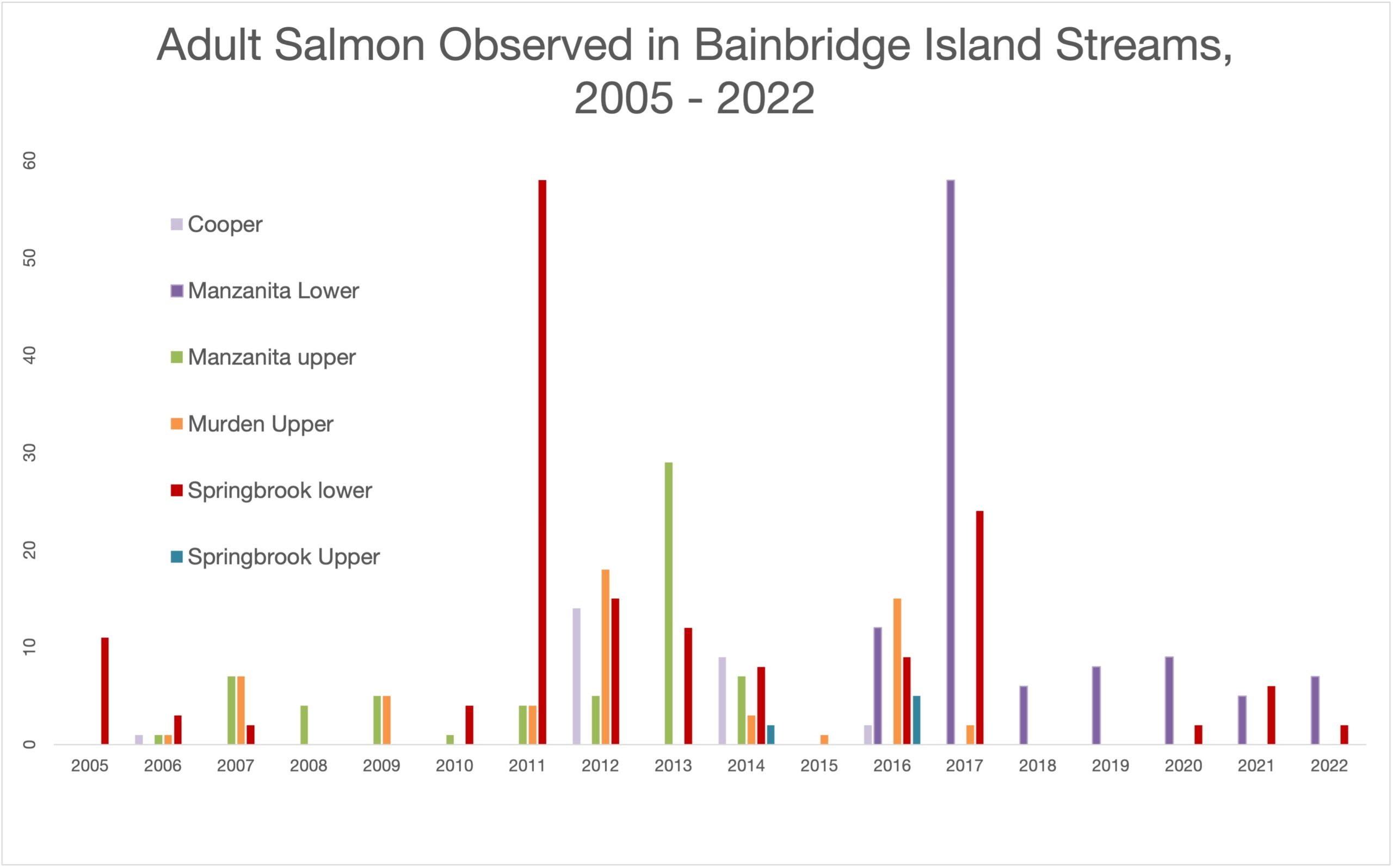
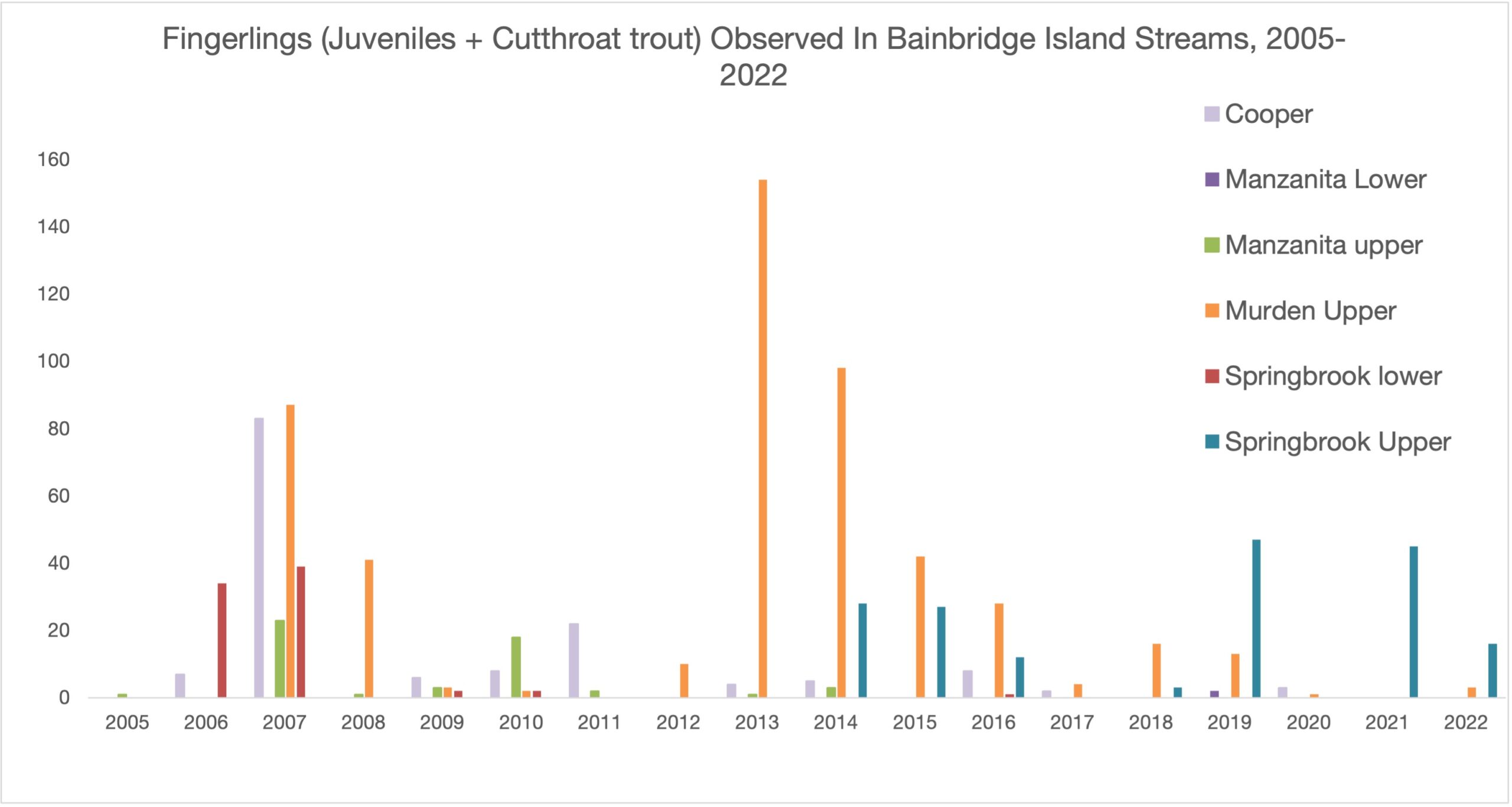
As with the past few years, we are showing low numbers of returning adults and juvenile fish, with no sightings of juveniles outside of Springbrook and Murden Creeks. These data are extremely concerning, and consistent with low area returns over the broader region. Salmon face a number of serious threats in Puget Sound, including overharvesting which can particularly hit small streams, loss of stream habitat for rearing young, and difficult conditions facing them in the open ocean due to large issues including climate change. Unfortunately, Bainbridge salmon are subject to the same risks that face the larger salmon populations throughout our region. Our data support an urgent need to do more work to protect, conserve, and restore salmon runs in Puget Sound and beyond.
This year, we were relieved not to see any evidence of pre-spawn mortality, but we will continue to keep an eye out for this concerning issue. In urbanized areas, bright salmon may be a sign of pre-spawn mortality that has been linked to urban stormwater runoff and more recently, specifically chemicals from vehicle tires. Although Bainbridge and our surrounding areas do not have the level of urbanization that we would expect to create large stormwater runoff issues in the same way that the Seattle and Tacoma areas do, we cannot rule out that stormwater runoff could be a growing issue for our area as well.
We also had some wonderful experiences during monitoring. Our wildlife viewing included copious signs of otter, and a rough-skinned newt.
Volunteers were able to alert the City to the need for additional sandbagging on the Springbrook weirs to maintain adequate flow this fall (see Figure to left). The City is pursuing funds with partnering organizations to replace and upgrade this salmon passage issue. Finally, we are greatly looking forward to the replacement of the undersized culvert on Murden Creek at highway 305 by WSDOT in 2023/2024. These are just the kinds of salmon passage improvements that we need to keep working on in order to improve habitat for our Island salmon, and we are hopeful that such improvements will contribute to the health of the salmon who call Bainbridge Island home.

